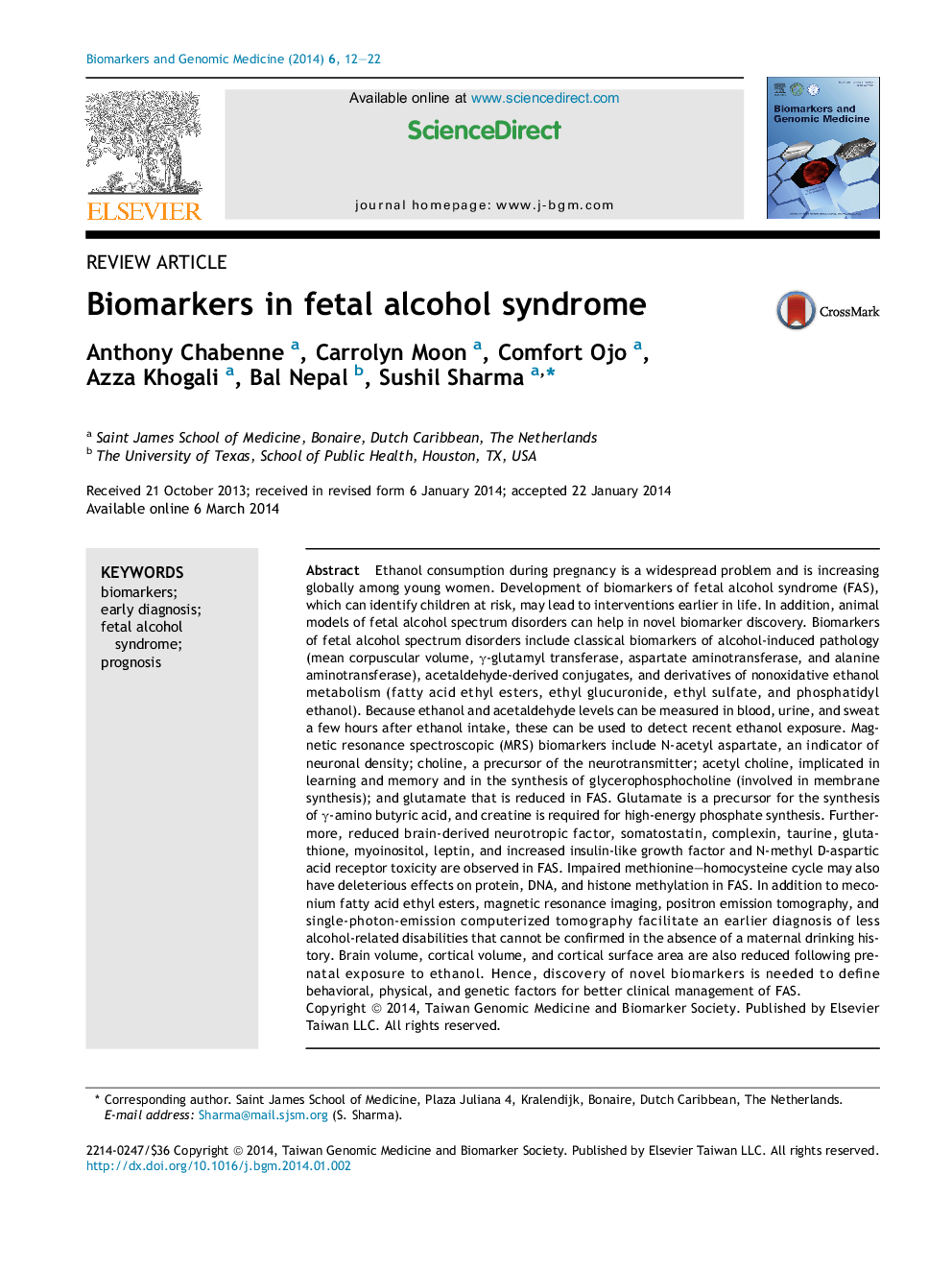| کد مقاله | کد نشریه | سال انتشار | مقاله انگلیسی | نسخه تمام متن |
|---|---|---|---|---|
| 3459318 | 1231137 | 2014 | 11 صفحه PDF | دانلود رایگان |
• Alcohol consumption during any phase of pregnancy is deleterious
• Alcohol induces most significant deleterious effects during gastrulation.
• Differential diagnosis of FAS is still a challenge.
• Hippocampal Somatostatin and BDNF are reduced in FAS.
• Neuronal progenitor cells are highly susceptible to ethanol.
Ethanol consumption during pregnancy is a widespread problem and is increasing globally among young women. Development of biomarkers of fetal alcohol syndrome (FAS), which can identify children at risk, may lead to interventions earlier in life. In addition, animal models of fetal alcohol spectrum disorders can help in novel biomarker discovery. Biomarkers of fetal alcohol spectrum disorders include classical biomarkers of alcohol-induced pathology (mean corpuscular volume, γ-glutamyl transferase, aspartate aminotransferase, and alanine aminotransferase), acetaldehyde-derived conjugates, and derivatives of nonoxidative ethanol metabolism (fatty acid ethyl esters, ethyl glucuronide, ethyl sulfate, and phosphatidyl ethanol). Because ethanol and acetaldehyde levels can be measured in blood, urine, and sweat a few hours after ethanol intake, these can be used to detect recent ethanol exposure. Magnetic resonance spectroscopic (MRS) biomarkers include N-acetyl aspartate, an indicator of neuronal density; choline, a precursor of the neurotransmitter; acetyl choline, implicated in learning and memory and in the synthesis of glycerophosphocholine (involved in membrane synthesis); and glutamate that is reduced in FAS. Glutamate is a precursor for the synthesis of γ-amino butyric acid, and creatine is required for high-energy phosphate synthesis. Furthermore, reduced brain-derived neurotropic factor, somatostatin, complexin, taurine, glutathione, myoinositol, leptin, and increased insulin-like growth factor and N-methyl D-aspartic acid receptor toxicity are observed in FAS. Impaired methionine–homocysteine cycle may also have deleterious effects on protein, DNA, and histone methylation in FAS. In addition to meconium fatty acid ethyl esters, magnetic resonance imaging, positron emission tomography, and single-photon-emission computerized tomography facilitate an earlier diagnosis of less alcohol-related disabilities that cannot be confirmed in the absence of a maternal drinking history. Brain volume, cortical volume, and cortical surface area are also reduced following prenatal exposure to ethanol. Hence, discovery of novel biomarkers is needed to define behavioral, physical, and genetic factors for better clinical management of FAS.
Journal: Biomarkers and Genomic Medicine - Volume 6, Issue 1, March 2014, Pages 12–22
